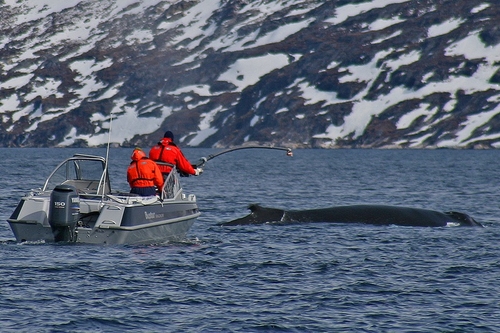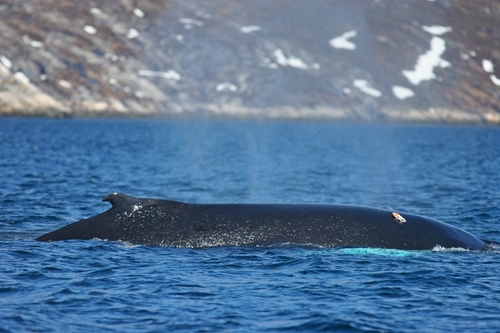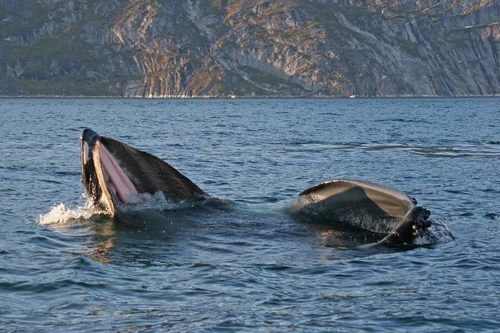International focus on whale research in Greenland Published 11.10.2012

New light has been shed on the humpback whales’ behaviour when searching for food in the deep ocean as scientists from Greenland, Denmark and Scotland have mounted D-tags on the whales. The results have obtained much focus in international medias such as Discovery Channel and National Geographic as well as a number of Danish medias.
“We may have drawn this much attention, because whales are fascinating to us all and this research is a link between new technology and biology”, says senior scientist Malene J. Simon from Pinngortitaleriffik, the Greenland Institute of Natural Resources and continues: “Greenland is also in focus because of the climate changes and many people would like to know more about the future prospects for the whales. Furthermore, the study has been published in a high-quality magazine and illustrates what goes on in the ocean with regard to one of the largest animals in Greenland.”
Results from the humpback whale research have been published in the English scientific magazine “The journal of Experimental Biology”. Malene J. Simon describes – together with Peter T. Madsen, professor from the University in Aarhus and professor Mark Johnson from the University of St. Andrews – the choreography of the whales when hunting krill in Godthåbsfjorden.
The whale accelerates to a speed of 3-4 m/s, then opens the mouth and rapidly consumes 30 tons of water filled with prey into a huge elastic mouth-bag, which stretches from the lower jaw to the navel. With the mouth-bag filled, the humpback whale continues its tail strokes in order to keep a speed of 1 m/s, despite the increased resistance from the huge amount of consumed water that must be accelerated. As the whale closes the mouth and glides onwards, the prey is filtered from the water, until it commences with a new mouthful by accelerating with enormous tail strokes. By doing so, the humpback whale filters almost 1000 tons of water per hour. The new information can be placed in the scientists’ calculation models that predict what effect the whales have on the Arctic eco-system.

Photo (Fernando Ugarte): D-tags mounted to whales in order to perform detailed records on their behaviour.

Photo (Fernando Ugarte): Humpback whale eating on the surface.
The scientific article is available as PDF – contact Malene J. Simos (address below).
The article written by Camilla Nissen Toftdal, communications assistant at the University in Aarhus, is available here.

